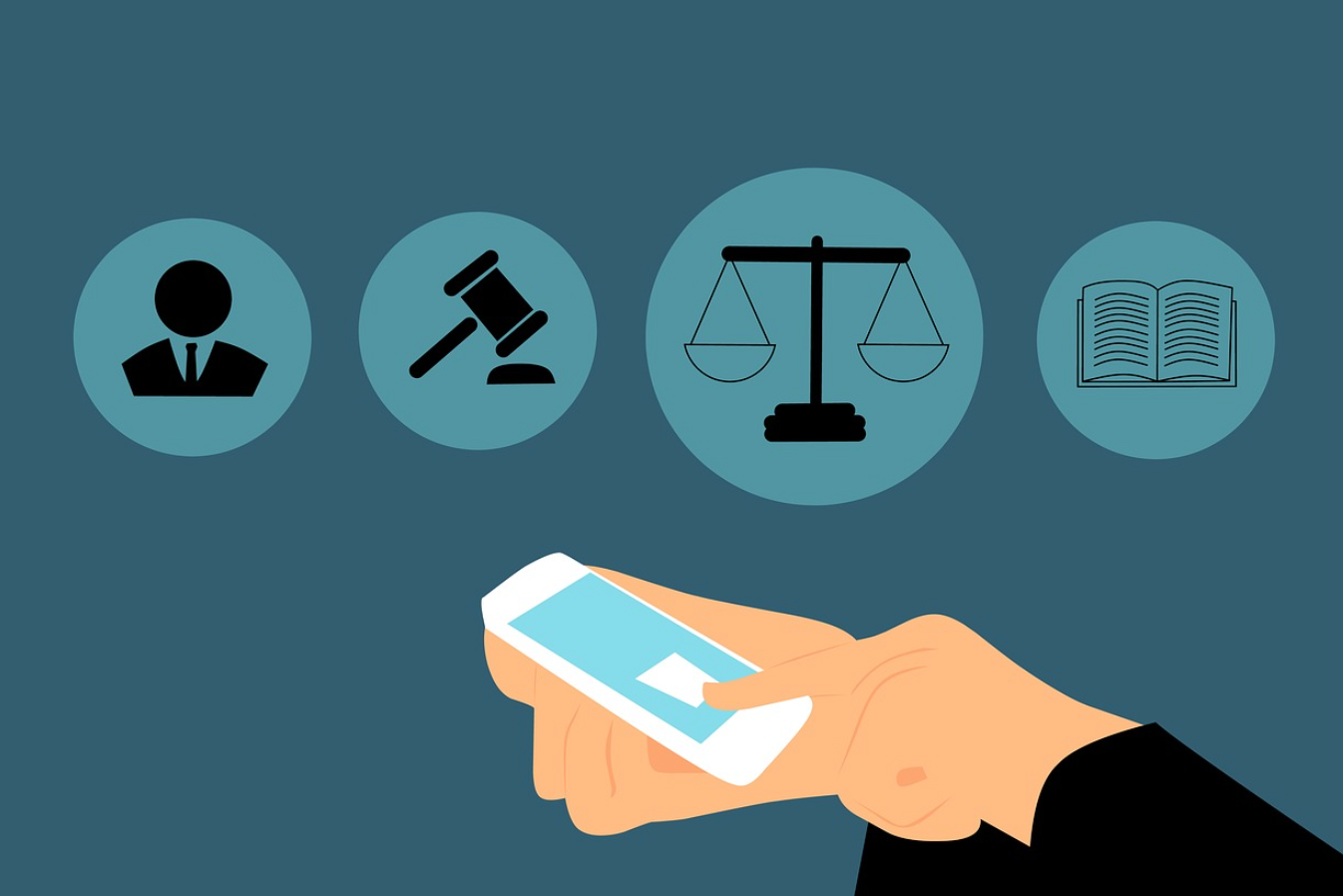While change can be hard in the legal industry, legal professionals now find themselves in a position to embrace newer, perhaps unfamiliar technologies to support a growing number of online court services.
In response to the world-wide COVID-19 pandemic, courts around the world have had to adapt to the challenges presented by this unprecedented situation, perhaps some better than others. While a critical transition from traditional court proceedings to an online mode has allowed justice to continue in many jurisdictions, courts and legal professionals are now tasked with the added responsibility of adopting new and somewhat unfamiliar technologies in the face of an ever-changing legal landscape.
Change can be hard. The justice system and its pre-pandemic resistance to technology are prime examples of a sector that is extremely careful to make hastily changes. However, law professionals and individuals needing legal services are looking to technology to help them safely resume work and secure legal support in the ongoing face of COVID-19. In an effort to explore how the pandemic has changed the courts perception and use of technology, as well as to address issues of access to the courts, ABC Legal Services held a webinar on the topic of legal technology and its growing impact on access to the legal system. The webinar was hosted by the company’s Training and Communication Specialist, Tomas Campomanes. The panelists included Radley Angelo, Head of Customer Success at ABC Legal, Brandon Fuller, Chief Technology Officer at ABC Legal and President of Docketly and me, Sascha Mehlhase, VP of Products at ABC Legal.
Radley Angelo kicked off our discussion providing an overview of natural language processing (NLP) and its role in the legal industry. In its simplest definition, NLP is a type of software that allows computers to read text or language quickly. NLP deployments in the document and text-heavy legal sector can help legal professionals quickly work through contracts or other legal documents. The technology provides valuable insight and analytics to the reader, including the ability to summarize common clauses and if they varied from standard phrases. Scalable deployments of NLP in the legal sector can predict many concepts, which can help improve efficiency in staff hours and paralegal time. The potential of NLP in the legal sector is just getting started. Radley finished the topic by stating it is exciting to see this is where the industry is trending with this technology as we more closely embrace insights and intelligence.
From there, Brandon Fuller went into discussion on the wide uses of machine learning (ML) technology inside artificial intelligence (AI). Brandon discussed how machine learning isn’t really about machines, but how humans can better do their jobs with the aid of machines. Brandon stated, “Basically you can have a human do it, a machine ‘watches’ and then the machine repeats the pattern and detects things at a larger scale by remembering what you did. If you aren’t quite sure what causes something, you can feed the machine a variety of data and it will find the correlations for you.”
The legal sector’s initial ML deployments were seen in the backend for invoice and billing. Now, legal professionals can leverage ML to help identify and analyze large volumes of data from the courts, and from there, dictate what tasks and workflows need to be moved through. With ML, a machine can perform tasks at record speed with exceptional efficiency, for example, law professionals can use ML for document review where the technology reviews a large file to find patterns, as well as varieties of service rates and service probabilities. Brandon advised with the additional use of ML technology, a large amount of employee work can be done digitally –making their jobs more efficient and effective, which directly impacts the customer’s experience by having a quick and positive interaction.
In an industry that has been stereotyped as older and slower, ML and NLP’s ability to improve productivity and safely enhance processes will ultimately improve industry perception and other legal professionals’ willingness to adopt these tools.
It was then my turn to round out the conversation on trending technology by providing some easy to adopt solutions. While e-filing and deep skip aren’t new, the pandemic has created a greater need for them as courts quickly look to adapt. “Ease of use” is a particularly important element to address with legal technology adoption. Given the industry has been hesitant to integrate more modern processes, teeing up solutions that are simple to integrate and use, are important if we want to see widespread and lasting technology in the sector. The webinar discussion tackled the topic of ease of use with legal service technologies such as deep skip and e-filing services. Internationally, courts started the transition to e-filing on a much larger scale before the pandemic. What we’re seeing now as courts continue to adapt to these technologies is a “new normal” of process automation where there is an expanding number of jurisdictions in the United States relying heavily on the use of technology. I elaborated that while some courts are stuck in paper and behind in their caseloads, those courts that have adapted to e-filing technology are avoiding the massive backlog and providing greater access to the courts than their paper-filing counterparts.

The panel then turned to how certain habits by legal professionals are easy to adapt to the use of technology, which is not a typically widespread perception and a reason for the historical hesitance to integrate technology. We discussed the availability of tools that can help keep professionals organized, especially during tough economic times. One of these tools includes robotic process automation (RPA), which Brandon explained as “not about robots—but rather about helping people become more like robots in the efficiency of their actions. RPA comes to life through the tools on desktops, to record activities individuals are doing, moving data from one system to another. RPA tools are allowing people to point and click on their desktop and repeat at a very quick speed without doing unnecessary tasks —computers take over these steps and by doing the work, they increase productivity.”
Diving deeper into the impacts of legal technology adoption is court access and changing perception of courts from a “place” to a “service.” When the pandemic started, it shut down almost all courts operations on a global level. Now courts are open again and looking to adopt different technologies such as telephone-based systems and video conferencing to resume services. In New York, for example, the criminal courts moved to all-conferencing systems. The wide use of video conferencing and adaptations in the US justice system is an exciting development, however not unique to the United States. China started transitioning to this system in 2016 and was already well prepared for e-filing and videoconferencing during the pandemic. Their advanced system allowed consumers to digitally input information on their cases and predict the outcome of litigations. The flexibility provided by these digital legal tools help mitigate the need to pause operations and as a result, shut citizens off from access to important legal support. Lastly, Brandon added that similar to schools and churches, courts’ usage of video conferencing and audio technologies has allowed for proliferation, allowing these professionals to gain wider reach and systems.
Despite the successful integrations of legal technology across the industry, it is still a learning process and privacy is a key concern. Courts are learning how to set up a framework for safe judicial procedures, but for some it’s still a struggle. One early successful use case was the tool, “Court Call.” This service was an early adopter and helped judicial systems adapt and learn how to utilize technology in the court at a rapid pace.
As referenced above, as more and more legal firms invest in tech, such as digital document management, they see their customer service rates go higher. The benefits of utilizing an all-digital document management system and the value of apps for process servers allowing for e-signatures, providing e-filing back to the court, and electronically documenting throughout the process of serving papers and updating customers in real-time helps improve experiences.
Brandon noted that remote attorney services also use a mobile app for lawyers as well as digital document management for clients internally and externally. The panel agreed that the pandemic has helped to advance app-based tools and move them in the right direction for the legal industry.
It’s important to note that the legal process is growing much closer to tools and apps we are used to seeing in our everyday lives, which makes life easier. The same is true for the legal industry, and adaption is critical. The more transparency and collaboration across processes by looking at things holistically, the more in-line legal services become with other products we interact with in our day-to-day lives.
In addition to improving customer experiences, technology can improve the relationships with clients. Radley said, “Legal professionals interact with customers at various touch points, and today you can truly get a hold of a business in so many ways. Given the current business environment, it’s never been more important to be able to manage those communications, adapt and use customer relationship management tools.”
As the industry evaluates how to adopt technologies, it is important to note that these decisions about adopting technology should be driven by the client’s expectations. From the client’s perspective, a good lawyer is also a lawyer who adopts tech to communicate and update, as well as sets realistic expectations on case outcomes for their clients. Law firms can adopt technology to manage client relationships. For example, they can use the insight gathered from data, to gain valuable knowledge on the full life-cycle of any given case, best approaches to argue in front of a judge and manage all aspects of communications with clients and their customers. Technology can play a large role in customer satisfaction, as it directly impacts the health and longevity of attorney/client relationships. Radley noted that, “if technology can remove a multitude of friction points for customers, some easy to use, some even free, you’re more likely to have a customer for life.”
While change can be hard in the legal industry, legal professionals now find themselves in a position to embrace newer, perhaps unfamiliar technologies to support a growing number of online court services. However, challenging these changes may seem, they also present an opportunity to improve upon resources and quality of service offered to clients. There is a silver lining to all of this; legal tech has seen a transformational shift with the introduction of machine learning, automation, AI, innovative apps and the expanded use of technology for legal services in the courts. This shift provides additional opportunities for legal professionals, law firms and legal departments to implement substantial improvements related to efficiency, productivity, security and marketability.


Join the conversation!